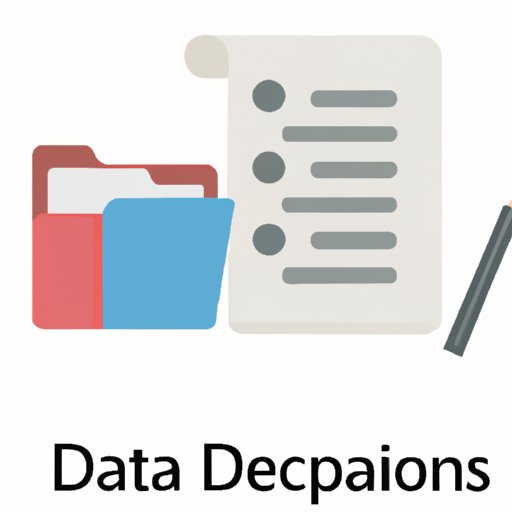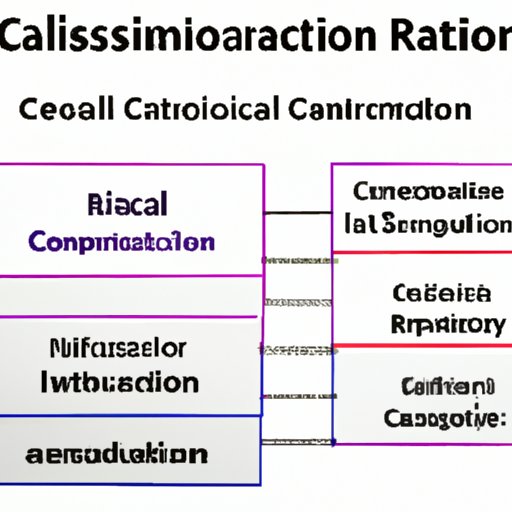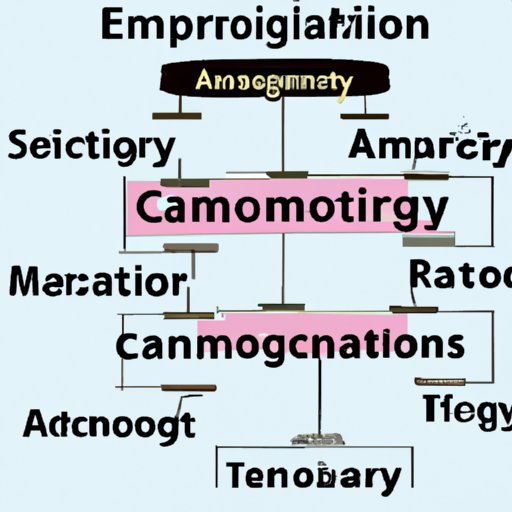Introduction
Classification is a fundamental tool used by scientists to organize and analyze data. It is an important concept that has been used for centuries to make sense of the world around us. But what exactly is the science of classification?
The science of classification involves the systematic categorization of living things, objects, and phenomena. It is based on the idea that all things can be organized into groups or categories based on certain shared characteristics. This process of grouping and organizing objects is known as taxonomy, and it enables scientists to study and understand the relationships between different species, objects, and phenomena.
In this article, we will explore the history and development of the science of classification, its principles, various types, benefits, methods, role in research, and applications in everyday life.
Exploring the History and Development of Classification Science
Classification has been used since ancient times to organize and catalog information. Ancient Greeks such as Aristotle and Theophrastus used simple methods of classification to group plants and animals. In the 18th century, Swedish botanist Carl Linnaeus developed a revolutionary system of taxonomy that provided a consistent way to classify organisms.
Linnaeus’ system of taxonomy was based on the idea that all living organisms could be divided into hierarchical categories based on their physical and biological characteristics. He proposed a two-part naming system, where organisms were given two Latin names: one for the genus and one for the species. This system is still used today, and it has become the foundation for modern classification systems.

Understanding the Principles of Taxonomy and Its Uses
Taxonomy is the branch of science that deals with the identification, naming, and classification of organisms. It is based on the idea that all living things are related and can be arranged into a hierarchy of categories based on their shared characteristics. Taxonomy provides a structured framework that allows scientists to easily identify and compare organisms.
Taxonomy is used in many areas of science, including ecology, evolutionary biology, and genetics. It is also used to classify and organize information in libraries and archives. By providing a standardized system of categorization, taxonomy makes it easier to search for and retrieve information.
An Overview of the Different Types of Classification Systems
There are several different types of classification systems used in science. Biological classification is the most common type, which is used to classify living organisms according to their shared characteristics. Molecular classification uses DNA sequences to classify organisms, while chemical classification uses the elements present in an organism to classify it. Physical classification uses physical characteristics such as size and shape to classify objects.
Each type of classification system has its own advantages and disadvantages. For example, biological classification is the most widely used system but it does not take into account the genetic differences between organisms. On the other hand, molecular classification is more precise but requires more time and resources to implement.

Examining the Benefits of Classifying Organisms
Classifying organisms has numerous benefits. One of the most important is that it helps scientists to better understand evolutionary relationships between species. By studying the similarities and differences between different species, scientists can gain insight into how they evolved and how they interact with each other.
Another benefit of classification is that it enhances our ability to study interactions between species. By grouping species together, scientists can more easily study the effects of predation, competition, and other ecological factors on the populations of different species.

Investigating the Various Methods Used for Organizing Data
Classification involves more than just grouping and categorizing objects. It also involves organizing the data associated with them. There are several methods used to organize data, including numerical classification, hierarchical classification, and cluster analysis.
Numerical classification assigns each object a numerical value that reflects its similarity to other objects. Hierarchical classification uses a tree structure to organize data, while cluster analysis groups objects based on their similarities. Each method has its own advantages and disadvantages, so it is important to choose the right one for the task at hand.

Analyzing the Role of Classification in Research
Classification plays an important role in research. By providing a system of organization, it enables researchers to expand the scope of their inquiries. It also facilitates communication within the scientific community by enabling scientists to easily access and compare data from different studies.
Classification also helps researchers to identify patterns and trends in the data that may otherwise go unnoticed. By grouping objects together, researchers can more easily detect correlations between different variables and draw meaningful conclusions about the data.
Discovering the Applications of Classification in Everyday Life
Classification is not just used in science; it is also used in everyday life. It is a powerful tool that can be used to facilitate organization and storage of information. For example, libraries use classification systems to organize books and other materials, while businesses use classification systems to store customer information.
Classification can also be used to enhance efficiency in a variety of settings. For example, hospitals use classification systems to store patient records and medical information, while factories use classification systems to organize production processes.
Conclusion
The science of classification has been used for centuries to make sense of the world around us. It is based on the idea that all things can be organized into groups or categories based on certain shared characteristics. This process of grouping and organizing objects is known as taxonomy, and it enables scientists to study and understand the relationships between different species, objects, and phenomena.
Classification has numerous benefits, including improved understanding of evolutionary relationships, enhanced ability to study interactions between species, and expanded scope of scientific inquiry. It also has numerous applications in everyday life, such as facilitating organization and storage of information and enhancing efficiency in a variety of settings.
The science of classification is an essential tool used by scientists to make sense of the world around us. It has a long history and has played an important role in advancing scientific knowledge and understanding.
(Note: Is this article not meeting your expectations? Do you have knowledge or insights to share? Unlock new opportunities and expand your reach by joining our authors team. Click Registration to join us and share your expertise with our readers.)
